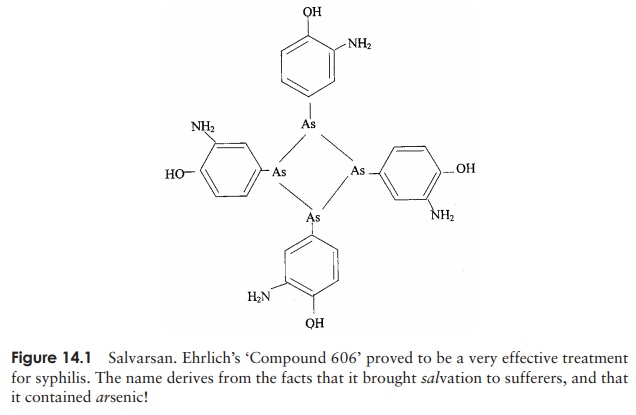Chapter: Essential Microbiology: Antimicrobial Agents
Antimicrobial Agents
Antimicrobial Agents
The term chemotherapy is
most closely associated in the minds of most people with the treatment of
cancer. In fact the term was first used by Paul Ehrlich to describe any use of
a drug or other chemical substance for the treatment of disease; thus, it has
much wider terms of reference. In our present discussion, we shall confine
ourselves to chemotherapy as it relates to the treatment of infectious
diseases. It was Ehrlich who, 100 years ago, observed how certain dyes would
stain bacteria but not the surrounding tissues, leading him to formulate the
idea of selective toxicity, whereby a
substance would selectively target harmful microorganisms but leave human
tissues undamaged. He tested hundreds of synthetic compounds in the search for
his ‘magic bullet’ before finding, in 1910, an arsenic-containing drug,
Salvarsan, which was effective against Treponema
pallidum, the causative agent of syphilis (Figure 14.1).

It was another 20 years before another significant antimicrobial
drug was developed, when the German chemist Gerhard Domagk showed a synthetic
dye, Prontosil, to be active against a range of Gram-positive bacteria. The
active component of prontosil was shown soon afterwards to be sulphanilamide.
In the following decade, numer-ous derivatives of sulphanilamide were
synthesised, many of which were more potent antimicrobial agents than the
parent molecule. This class of compounds is known col-lectively as the sulphonamides, or sulfa drugs. In the
years leading up to the Second World War, sulphonamides dramatically improved
the mortality rates due to pneumonia and puerperal fever.
Nowadays, sulphonamides have largely been replaced by antibiotics because of their side-effects, and because, due to wholesale and indiscriminate use in the early years, bacterial resistance to sulphonamides has become widespread. Some synthetic compounds are still useful as antimicrobial agents, however. Isoniazid is one of the principal agents used in the treatment of tuberculosis.
It is nearly always given in association with another
antimicrobial agent because of the high incidence of resistant forms of the
mycobacteria that cause the disease. Like the sulphonamides, isoniazid is a
structural analogue, and is thought to inhibit the produc-tion of mycolic acid
in the mycobacterial cell wall.
The quinolones
are synthetic substances related to nalidixic acid, and include ciprofloxacin
and norfloxacin. They interfere with nucleic acid synthesis by inhibiting DNA
gyrase, the enzyme responsible for unwinding DNA prior to replication.
Quinolones are used in the treatment of urinary infections, as are the nitrofurans. These are active against
certain fungi and protozoans as well as a range of bacteria.
Related Topics